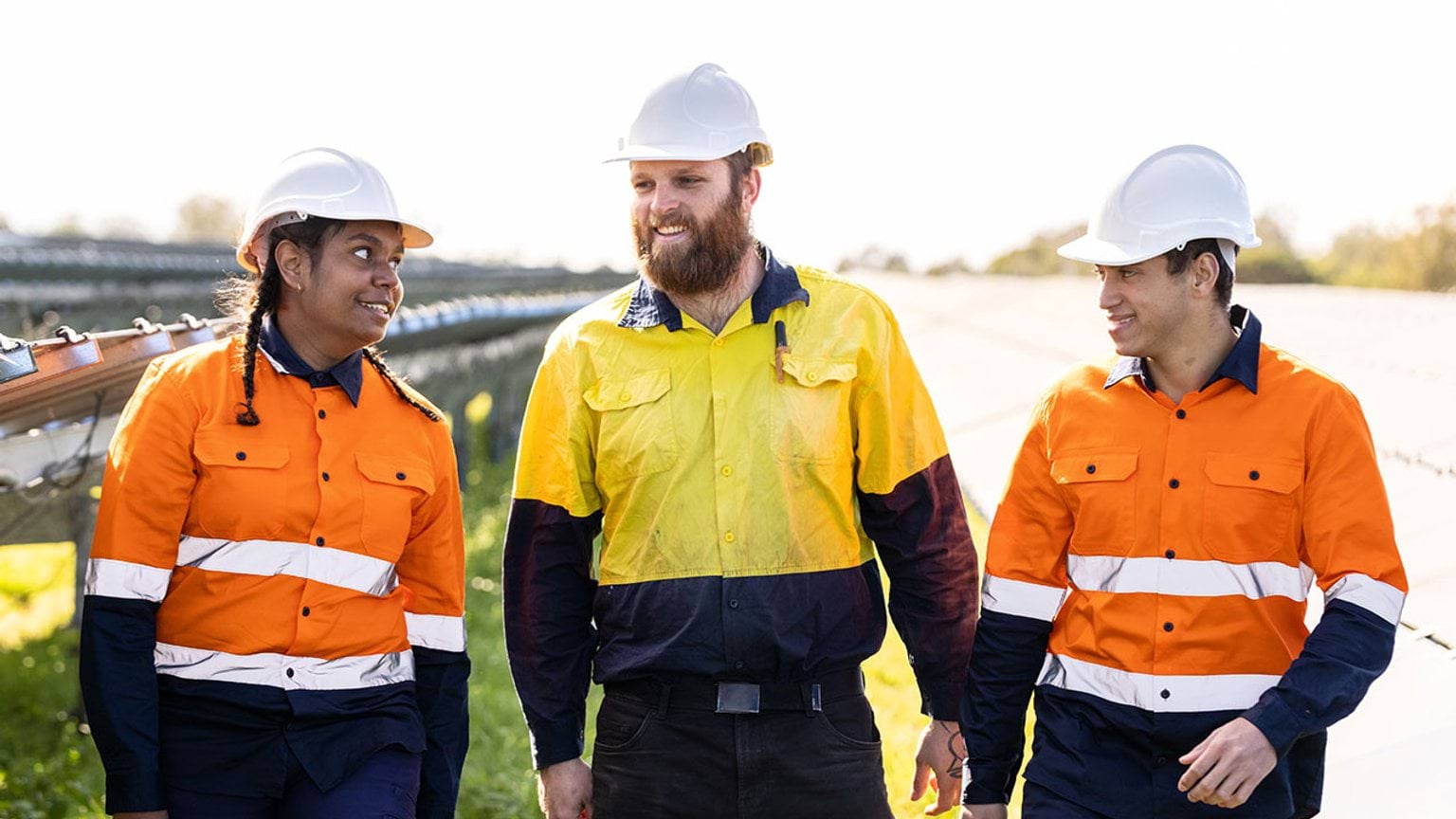The growing demand for clean energy facilities means more jobs for construction workers. Builder’s labourers perform routine tasks on construction sites. Between ongoing investment in construction and movements towards sustainable practices, opportunities for upskilled workers are set to rise.
Find out what a builder’s labourer does and the related Vocational Education and Training (VET) courses and pathways you can take to secure a job.
What is a builder’s labourer?
A builder’s labourer performs a range of onsite tasks. You may load and unload tools and equipment. You may mix and pour materials like concrete or plaster, or help install pipes, valves and fittings. It’s a catch all role, one that suits people who take to physical work.
Find out more about builder’s labourers(opens in a new window) and these related jobs on the Victorian Skills Gateway(opens in a new window):
- bricklayer(opens in a new window)
- bulldozer operator(opens in a new window)
- carpenter(opens in a new window)
- construction rigger(opens in a new window)
- crane, hoist or lift operator(opens in a new window)
- earthmoving labourer(opens in a new window)
- scaffolder(opens in a new window)
- stonemason(opens in a new window).
Related training courses
Explore these related TAFE and training courses on the Victorian Skills Gateway(opens in a new window):
- building construction and improvement(opens in a new window)
- civil construction(opens in a new window)
- construction management(opens in a new window)
- construction waterproofing(opens in a new window)
- plumbing(opens in a new window)
- working safely in the solar industry(opens in a new window).
You may be eligible for government funding to help pay for your course.
Median salary
The median weekly earnings for building and plumbing labourers in Australia is $1,634.
Source: Jobs and Skills Australia(opens in a new window)
Note this salary is current as of January 2025 and is indicative only. A range of salaries apply to different roles across the industry.
Job demand in Victoria
Below are the employment projections for building and plumbing labourers jobs in Victoria. Figures show the number of workers in 2024 and the new workers expected to enter the workforce by 2027 and 2034.
‘New workers expected’ accounts for workers adding new jobs to the economy and replacing retirees over the next 3 and 10 years. These projections are estimates only. There will be additional jobs available as people move between jobs and industries.
Specific data is not available for builder’s labourers.
| Region | Workers 2024 | New workers expected by 2027 | New workers expected by 2034 |
|---|---|---|---|
| Victoria | 17,687 | 3,269 | 7,140 |
| Melbourne – inner metropolitan | 2,451 | 566 | 1,141 |
| Melbourne – inner south-east metropolitan | 895 | 165 | 315 |
| Melbourne – southern metropolitan | 2,917 | 489 | 1,070 |
| Melbourne – northern metropolitan | 2,491 | 506 | 1,163 |
| Melbourne – eastern metropolitan | 2,079 | 349 | 727 |
| Melbourne – western metropolitan | 3,028 | 705 | 1,638 |
| Ballarat and surrounds (Central Highlands) | 491 | 69 | 151 |
| Bendigo, Echuca and surrounds (Loddon Campaspe) | 572 | 67 | 180 |
| Geelong, Colac and surrounds (Barwon) | 911 | 141 | 330 |
| Gippsland | 652 | 68 | 161 |
| Horsham and surrounds (Wimmera Southern Mallee) | 106 | 15 | 20 |
| Mildura, Swan Hill and surrounds (Mallee) | 200 | 28 | 38 |
| Shepparton, Seymour and surrounds (Goulburn) | 286 | 30 | 67 |
| Wangaratta, Wodonga and surrounds (Ovens Murray) | 373 | 40 | 87 |
| Warrnambool, Hamilton and surrounds (Great South Coast) | 236 | 30 | 49 |
Source: Victorian Skills Authority Employment Projections Dashboard
Resources to plan your next steps
Visit our clean energy industry profile to find out about:
- what it’s like to work in clean energy, and some of the jobs you could do
- training and skills to work in the industry, and financial assistance to help pay for your course
- help getting a job in clean energy, and industry job projections for Victoria
- other free resources and advice to plan your training and career.
Explore growing industries in your region
Updated



